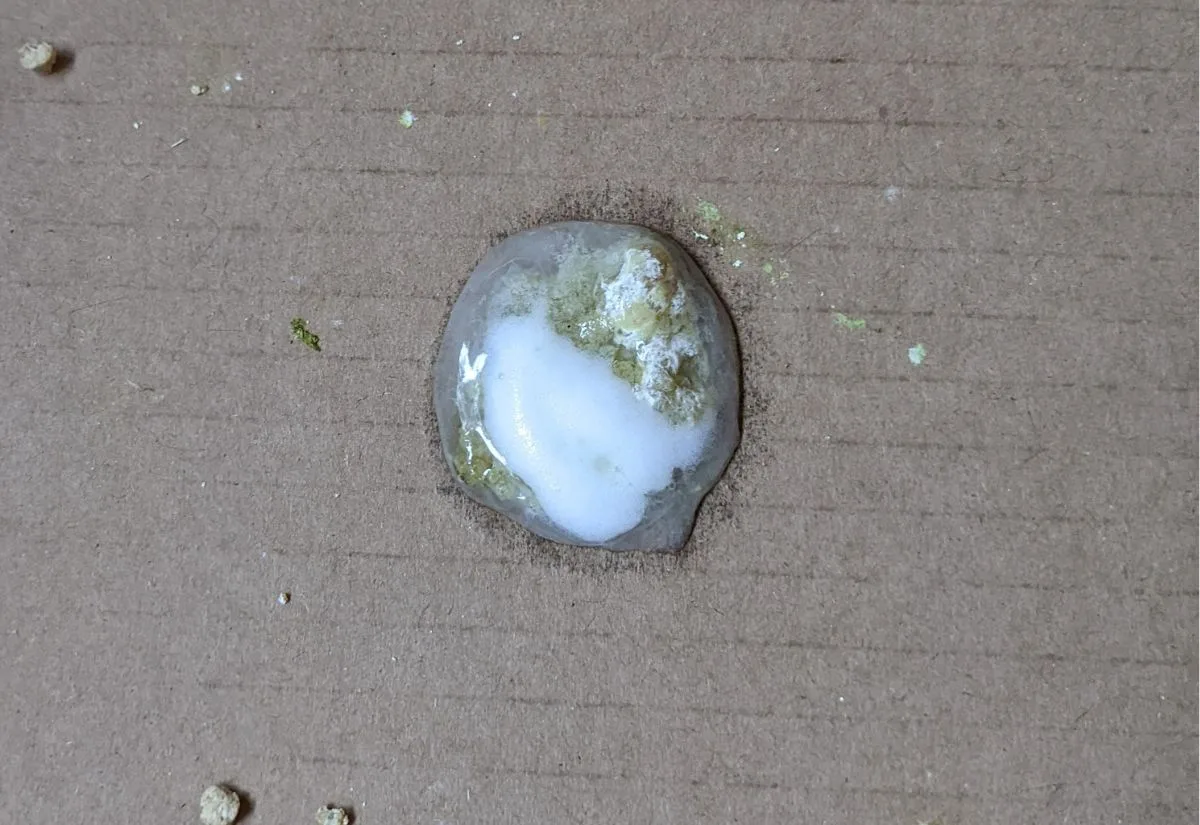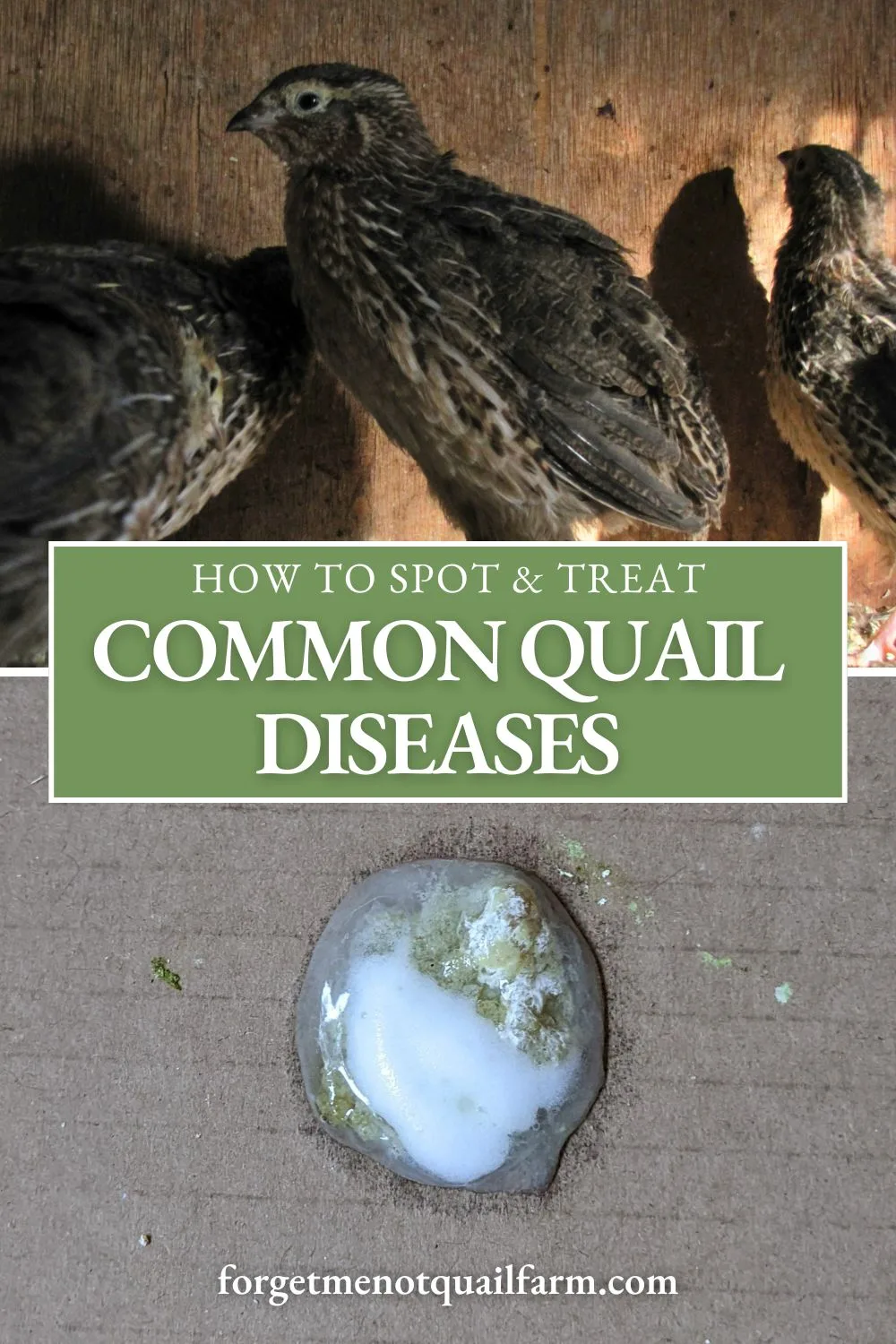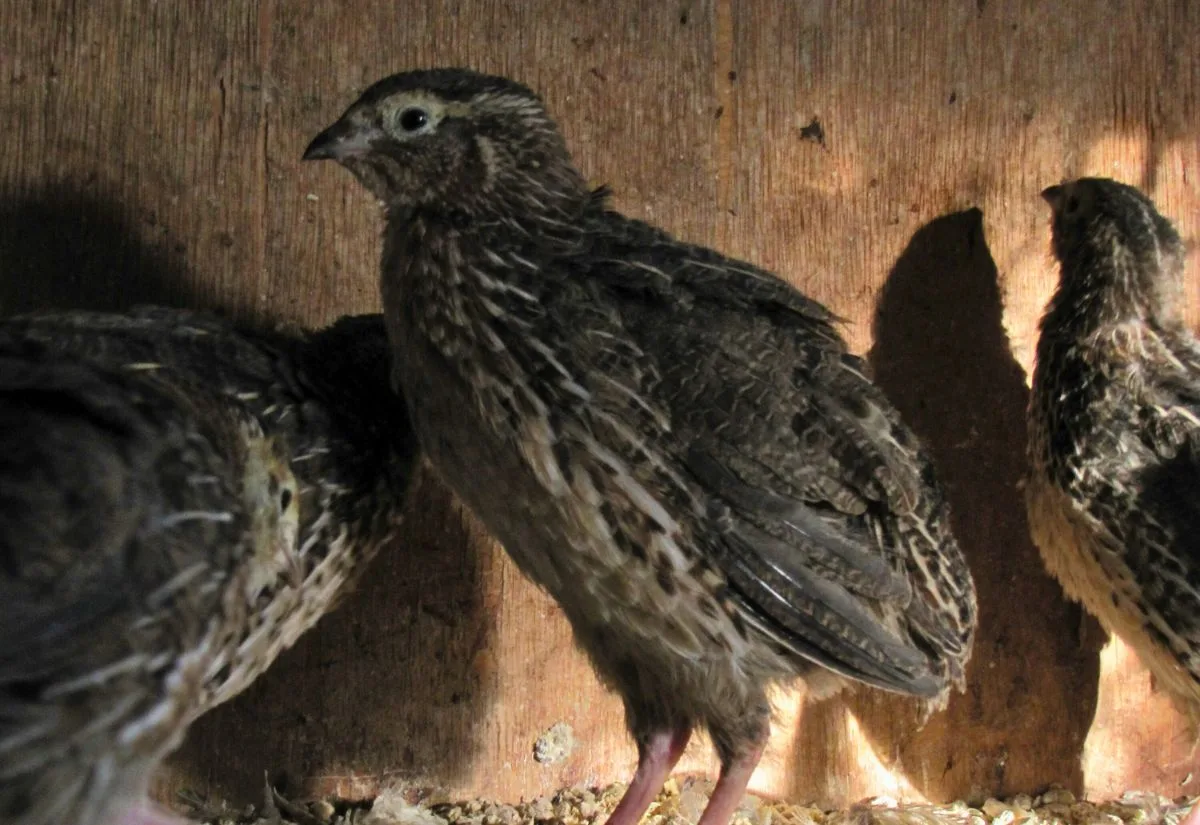Common Quail Diseases & How to Keep Your Covey Healthy
When you raise Coturnix quail, you quickly learn that even hardy birds can fall ill if conditions aren’t right. Most of the time, good husbandry keeps them healthy, but every keeper eventually runs into a sick bird or two. Knowing what to look for (and how to act fast) keeps small problems from turning into big ones.
Here are the common quail diseases I see people ask about—what causes them, the signs I watch for, what treatment really looks like, and how to head them off early.
Recognizing Early Signs of Illness in Quail
Even a healthy covey has off days, but a truly sick quail shows it if you’re watching your birds. Catching issues early is the easiest way to stop a problem from turning into an outbreak.
Here’s what I watch for:
- Birds sitting fluffed up or spending time away from the rest of the covey
- A drooping tail or wings that hang low
- Eyes half-closed or crusted over
- Changes in droppings (color, consistency, or frequency)
- Loss of appetite or ignoring favorite treats
- Labored or noisy breathing
- Sudden drop in egg production
I also trust my gut: if a bird hangs back at feeding time or looks off, I pull it to a quiet spot and watch it for a day. Healthy quail are alert, upright, and quick to respond to noise or movement. If a bird lingers in a corner or seems slow to react, it’s worth isolating and observing for a day or two. If you want the full checklist of what’s normal (and what’s not) check out Sick Quail Symptoms: What to Watch for in Coturnix Quail.
A Few Quick Quail Health Terms
Before we get into the illnesses, here are a few terms you’ll see.
- Antibiotics: Used for bacterial infections only (not viral or fungal).
- Antitoxin: A treatment that neutralizes toxins (for example, the type used in botulism cases).
- Biosecurity: The everyday practices that prevent diseases from entering or spreading in your covey.
- Necropsy: An autopsy on a bird. Helpful for confirming cause of death when a disease is suspected.
- Protozoa: Microscopic single-celled organisms responsible for diseases like coccidiosis.
- Quarantine: Isolating new or sick birds for at least two weeks to prevent transmission.
- Supportive Care: Keeping a bird hydrated, warm, and low-stress while it heals.
- Zoonotic: A disease that can pass between birds and humans, such as salmonella.
Common Quail Diseases and How to Handle Them
Most illnesses sneak in through dirty bedding, damp feed, shared gear, or new birds. Catch symptoms early and keep things clean. That’s most of the job. My Zoology background helps me explain what to watch for—and how to keep these from taking hold.
Aspergillosis: Mold-Related Respiratory Illness
Aspergillosis is a fungal infection caused by Aspergillus spores, which thrive in damp or moldy conditions. Quail breathe them in through contaminated bedding, feed, or stagnant air.
Symptoms: Labored or open-mouth breathing, wheezing, nasal discharge, and general weakness. Birds may lose weight or seem sleepy and withdrawn. In advanced cases, white nodules appear in the lungs (only visible during necropsy).
Treatment: There’s no quick cure. A vet may prescribe antifungal medications like itraconazole, but the main focus is supportive care (clean air, hydration, and warmth).
Prevention: Keep bedding and feed dry and mold-free. Replace feed often, scrub waterers regularly, and make sure pens have good airflow without drafts. If you smell mustiness, act fast… it’s a red flag. In one study, quail treated with itraconazole at 10 mg/kg/day for 7 days did better. Work with a vet if you go this route.
If you want the research, a study on Japanese quail found that poor ventilation and moldy conditions were the biggest risk factors.
Avian Influenza (Bird Flu)
A fast-spreading viral infection that hits nearly every kind of poultry, quail included. It spreads through contact with infected birds, droppings, or contaminated surfaces (and sometimes through the air).
Symptoms: Sudden lethargy, swelling around the eyes, nasal discharge, diarrhea, and a sharp drop in egg production. In severe outbreaks, death can occur within hours.
Treatment: There is no treatment for avian influenza. Suspected cases should be reported to your state agriculture department immediately. Infected birds are typically euthanized to prevent further spread.
Prevention:
- Keep wild birds away from feed and water.
- Disinfect pens and tools regularly.
- Quarantine any new birds for at least 14 days.
- Stay informed about outbreaks in your area. Sometimes it’s worth locking things down until the local outbreak passes.
This quail-focused review shows they carry both low- and high-path strains easily. One more reason to keep biosecurity tight, even in backyard setups
Botulism: Toxin from Decaying Material
Caused by Clostridium botulinum, botulism occurs when quail eat decaying matter or contaminated feed and water.
Symptoms: Progressive paralysis beginning in the legs and moving up to wings and neck. Birds may struggle to hold their heads up (“limber neck”) and eventually lose the ability to breathe.
Treatment: Immediate administration of an antitoxin (if available) may help. Offer plenty of clean water and electrolytes. Remove all spoiled material from the pen right away.
Prevention: Your best move is speed and sanitation. No standing water, no spoiled feed, and remove anything dead right away.
Coccidiosis: Intestinal Parasite Infection
Coccidiosis is caused by protozoa (Eimeria species) that damage the intestinal lining. It spreads quickly through contaminated droppings, especially in humid or overcrowded conditions.
Symptoms: Bloody or watery droppings, weight loss, poor appetite, and a sudden drop in egg production. Birds may look puffed up and lethargic.
Treatment: Add amprolium to drinking water for 5–7 days. Keep birds hydrated and clean the brooder or pen thoroughly. In severe cases, consult a vet for further treatment.
Prevention: If coccidiosis has been an issue, you can use a medicated game-bird or quail starter in the brooder stage (only if the label lists quail). Follow the directions closely; chick/chicken-only medicated feeds aren’t always suitable for quail. Keep bedding dry, rotate outdoor pens now and then, and quarantine any new arrivals.
If you’re setting up your first brooder or pen, start here: creating the right pen dimensions for Coturnix quail. Enough space and airflow keep stress low. That alone goes a long way toward preventing problems. This coccidiosis review covers the Eimeria species that hit quail and why dry, clean housing stops the cycle.

Infectious Coryza: Bacterial Respiratory Disease
Caused by Avibacterium paragallinarum, infectious coryza is a bacterial infection that often moves through mixed flocks or contaminated equipment.
Symptoms: Facial swelling, sneezing, nasal discharge, and a foul odor around the head. Birds may eat less and stop laying altogether.
Treatment: Treat with antibiotics such as oxytetracycline or sulfadimethoxine, as prescribed by a vet. Isolate affected birds immediately.
Prevention:
- Quarantine newcomers.
- Keep pens well-ventilated and dry.
- Avoid overcrowding. Stress makes quail more susceptible.
Ventilation and space make a difference, but diet plays a big role too. This quail coryza research shows how quickly it spreads through shared gear and tight quarters (both preventable). Feed affects immunity more than most people realize. I get into that here: Why Protein Matters in Coturnix Quail Diets.
Newcastle Disease
A fast-spreading viral disease with respiratory and neurological signs. It can wipe out birds fast if it gets into your setup.
Symptoms: Gasping, coughing, head tremors, twisted necks, unsteady walking, and sudden death. Egg production drops dramatically.
Treatment: No cure. Infected birds should be euthanized humanely to protect the rest of your covey.
Prevention: Follow strict biosecurity: isolate new birds, disinfect pens and tools, and avoid contact with outside flocks. Vaccination programs may be available in high-risk areas.
This review on viral infections in quail backs up how contagious Newcastle is, which is why quarantine and sanitation aren’t optional.
Quail Bronchitis
A contagious viral infection affecting the upper respiratory tract, especially in crowded or poorly ventilated setups.
Symptoms: Coughing, sneezing, watery eyes, nasal discharge, and labored breathing. Laying hens may stop producing altogether.
Treatment: Supportive care only. Keep affected birds warm, isolated, and stress-free. Offer clean feed and water, and consider antibiotics to prevent secondary bacterial infections.
Prevention: Bronchitis spreads fast in dusty, stuffy housing. Clean air, low stress, quick isolation. That combo still works best. Quarantine all new quail for at least 14 days.
This review of viral respiratory infections in quail confirms that bronchitis spreads fast in dusty, poorly ventilated housing. Same story here: good airflow, low stress, and fast isolation.ctive defenses.
Salmonellosis: A Rare but Serious Concern
A bacterial infection caused by Salmonella. Quail seem less prone than chickens (possibly thanks to higher body temperature), but it’s still a risk if hygiene slips.
Symptoms: Watery droppings, weight loss, and decreased egg production. Some birds show no symptoms yet continue to spread the bacteria.
Treatment: Antibiotics may help, but infected birds often remain carriers. Sanitation is key: wash hands thoroughly after handling birds and equipment.
Prevention: Use rodent-proof storage, clean feeders and waterers daily, and practice excellent pen hygiene. Always collect and store eggs in a clean, dry environment.
Ulcerative Enteritis
Also called quail disease, ulcerative enteritis is caused by Clostridium colinum. It spreads through contaminated droppings and thrives in unsanitary or stressful environments. Some game-bird programs use bacitracin-medicated feed preventively. If you go that route, stick to the label and your vet’s advice.
Symptoms: Bloody or watery diarrhea, loss of appetite, and rapid weight loss. Birds often appear fluffed up and inactive before dying suddenly.
Treatment: Treat with bacitracin or penicillin under veterinary guidance, and provide electrolytes in the water. Disinfect pens thoroughly.
Prevention: Keep pens clean and dry, rotate bedding, and control rodents. Quarantine new quail and avoid overcrowding to reduce stress. For larger coveys, Hatching Time’s stackable quail cages are easy to scrub and keep dry. Exactly what you want if you’re trying to stay ahead of bacterial issues.
Texas A&M’s diagnostic lab has documented multiple cases of ulcerative enteritis in quail. It spreads fast when birds are stressed or kept in dirty conditions.
Supportive Care for Sick Quail
When a bird shows signs of illness, supportive care can make a big difference while you identify the cause or wait for medication to take effect. The goal is simple: lower stress, keep the bird hydrated, and give it a better chance to bounce back.
Here’s what I do when isolating a sick quail:
- Move the bird to a quiet, warm, low-stress area. A small brooder or crate works well.
- Keep the temperature around 75–80°F, using a heat lamp or ceramic bulb if needed, but always leave room for the bird to move away from the warmth. I keep one corner warm and the other cooler so the bird can choose.
- Offer clean water mixed with electrolytes, and make sure dishes are shallow and easy to reach.
- Provide a high-protein game-bird feed (or a non-medicated chick starter you trust).
- Dim the lighting to encourage rest, and avoid frequent handling.
Supportive care buys you time, either for meds to work or for a vet to confirm what you’re dealing with. For a few gentle, at-home add-ons I use, see Natural Remedies for Common Quail Health Issues.
Frequently Asked Questions
New to quail or just wondering what to do in tricky health situations? Here are the ones I hear most.
Sometimes, if it’s mild and you catch it early. Warmth, quiet, and hydration help, but if it doesn’t turn around in a couple days, call a vet. For gentle add-ons, see natural remedies for common quail health issues.
Viral infections won’t respond to antibiotics, so don’t waste time trying those unless a vet confirms it’s bacterial.
Yes. Cover pens, protect feed and water, and don’t let wild birds share space with your covey.
Bag and refrigerate (not freeze) if you want a necropsy. Answers now save birds later.
Most small keepers don’t. Check your state rules and talk with a poultry vet if Newcastle or AI are common where you live.

healthy covey mostly comes down to three things: clean housing, solid biosecurity, and paying attention. Watch for early signs: changes in droppings, breathing, or appetite usually tell you something’s off long before a bird crashes. Quail bounce back fast when they’ve got good care and a clean setup. Most problems never get a chance to take hold if you practice healthy habits.
You’ve got this. With vigilance and consistent care, your covey can stay healthy, productive, and thriving for years to come.







